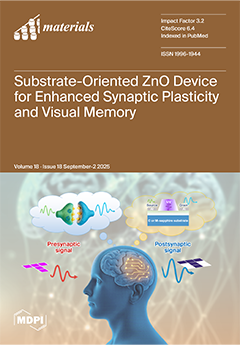The SiGe/Si multilayer is a critical component for fabricating stacked Si channel structures for next-generation three-dimensional (3D) logic and 3D dynamic random-access memory (3D-DRAM) devices. Achieving these structures necessitates highly selective SiGe etching. Herein, CF
4/O
2 and CF
4/N
2 gas chemistries were employed to elucidate and enhance the selective etching mechanism. To clarify the contribution of radicals to the etching process, a nonconducting plate (roof) was placed just above the samples in the plasma chamber to block ion bombardment on the sample surface. The CF
4/N
2 gas chemistries demonstrated superior etch selectivity and profile performance compared with the CF
4/O
2 gas chemistries. When etching was performed using CF
4/O
2 chemistry, the SiGe etch rate decreased compared to that obtained with pure CF
4. This reduction is attributed to surface oxidation induced by O
2, which suppressed the etch rate. By minimizing the ion collisions on the samples with the roof, higher selectivity, and a better etch profile were obtained even in the CF
4/N
2 gas chemistries. Under high-N
2-flow conditions, X-ray photoelectron spectroscopy revealed increased surface concentrations of GeF
x species and confirmed the presence of Si–N bond, which inhibited Si etching by fluorine radicals. A higher concentration of GeF
x species enhanced SiGe layer etching, whereas Si–N bonds inhibited etching on the Si layer. The passivation of the Si layer and the promotion of adhesion of etching species such as F on the SiGe layer are crucial for highly selective etching in addition to etching with pure radicals. This study provides valuable insights into the mechanisms governing selective SiGe etching, offering practical guidance for optimizing fabrication processes of next-generation Si channel and complementary field-effect transistor (CFET) devices.
Full article






